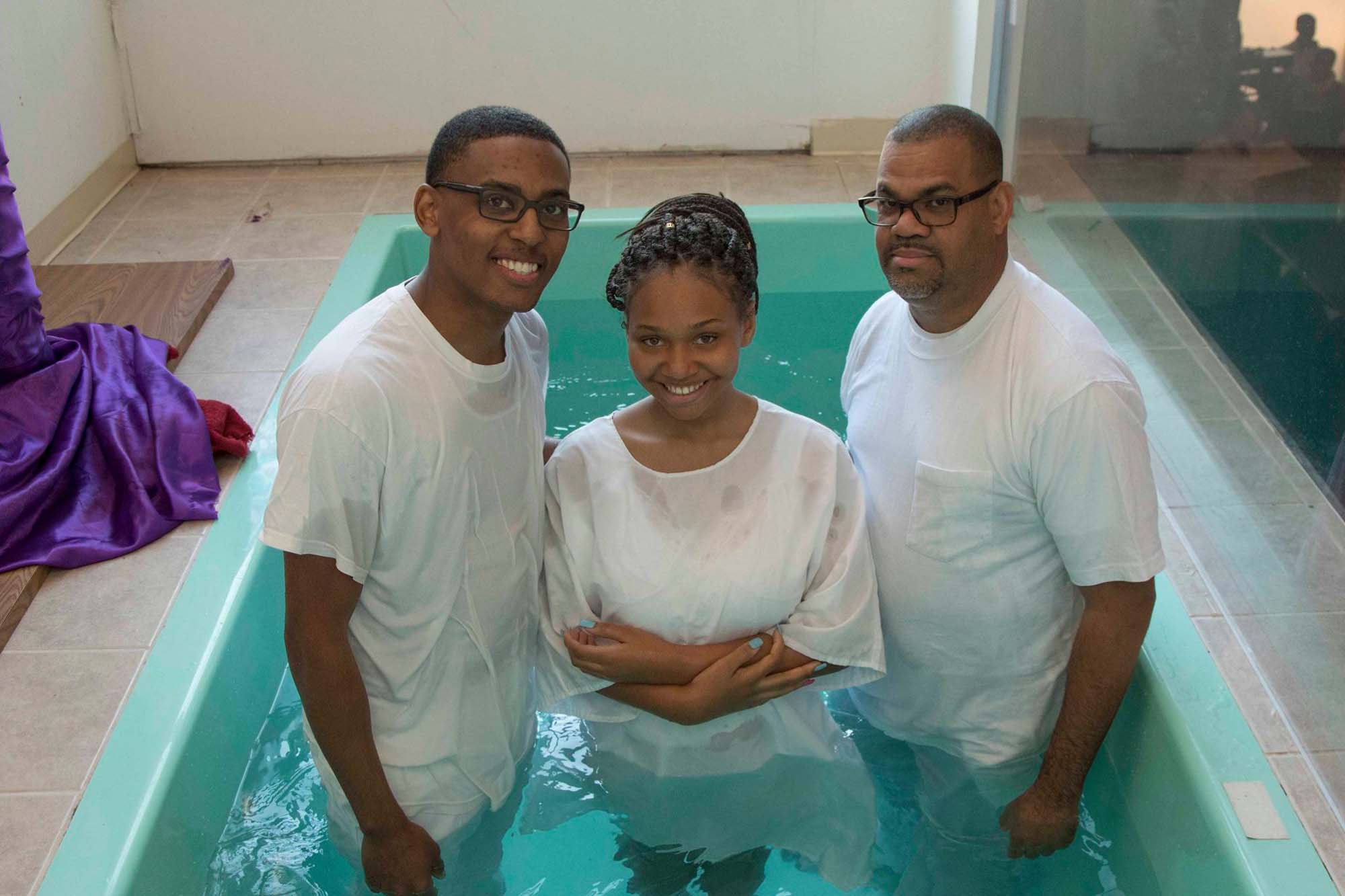
ALPHARETTA, Ga. (BP) — Anyone who remembers the violence on the streets of Baltimore in April of 2015 will be familiar with pastor Wayne Lee’s mission field. The world watched as students of Frederick Douglass High School threw rocks and bottles during protests the day of Freddie Gray’s funeral.
 Today, Christian Liberty Church meets in the school’s auditorium each week. The church office is in a nearby mall that was looted during the riots. Through the church’s ministry, 262 people have come to faith in Jesus. Launched in May 2014, Christian Liberty identified with the Southern Baptist Convention and became a North American Mission Board (NAMB)-funded church plant in 2015.
Today, Christian Liberty Church meets in the school’s auditorium each week. The church office is in a nearby mall that was looted during the riots. Through the church’s ministry, 262 people have come to faith in Jesus. Launched in May 2014, Christian Liberty identified with the Southern Baptist Convention and became a North American Mission Board (NAMB)-funded church plant in 2015.
“We started with nothing,” said Lee, who pastors Christian Liberty. “So everything God has done He has done on His own and with the support and encouragement of NAMB.”
Throughout North America, hundreds of new churches started in 2015 are taking root and are already making a difference in their communities. In Indianapolis, Restoration Church launched in September 2015 and is seeing between 100 and 150 weekly worshipers. In Minneapolis, Unlock Church had 100 at Easter services this year. In Portland, Ore., Remedy City Church has 60 attendees a week in the middle of one of the more challenging mission fields in the United States, where planter Josh Carter felt an overwhelming call to begin a church.
These congregations are among the 926 church plants Southern Baptists started in 2015. Another 188 churches chose to begin cooperating with the SBC bringing the total count of new churches for the year to 1,114.
“We celebrate the birth of each one of these new churches and the pastors who are planting them,” said Kevin Ezell, president of NAMB. “Church planting is challenging work, and we are sending planters to start churches in difficult places.”
Of those churches started in 2015, 52 percent report congregational makeups that are predominantly non-Anglo with Hispanic (143) and African American (92) comprising the largest groups of ethnic plants.
Planting and counting new churches
Many new churches in the SBC are started by existing churches that see a need and step out to plant a new church. Often a state Baptist convention helps with funding or other resources. NAMB also has a ministry assignment from the SBC to assist Southern Baptists with church planting.
Usually, NAMB’s funding for a church plant is provided by the Annie Armstrong Easter Offering, blended with funds from other sources as well. NAMB might provide part of a church planter’s salary or help cover physical costs for the plant. NAMB also provides no-interest or low-interest building loans to church plants. Through the Send Network, NAMB provides church planter assessments, training, coaching and church planter care.
In 2017 NAMB will send $43 million to state convention partners to be used for church planting and evangelism efforts. Most of that funding goes to state conventions outside the South.
Counting church plants can be confusing since many state Baptist conventions have different criteria that must be met before a congregation is considered a “church.” In 2010, NAMB began a more comprehensive church plant counting process, requiring the church name and address, planter name and the church SBC identification number. Requiring the SBC ID ensures that a plant is not inadvertently counted multiple times. It also prevents the possibility that a plant might be counted but then fail before it meets the requirements for an SBC ID number.
NAMB is placing more emphasis on church planter assessment and making sure planter candidates take time to complete the developmental process needed before beginning their planting journey. The goal is to deploy church planters who are better qualified and ready for the challenges of planting a new church.
“We want to identify areas in which a potential church planter might need growth and then help them through that,” said Jeff Christopherson, vice president of Send Network at NAMB. “We love church planters and we want to see them succeed.”
Multiplied effect
Ezell said NAMB is working toward church plant multiplication, not just yearly addition.
“We want to help plant churches that are going to turn around in a short time and plant churches themselves,” Ezell said. “We are working to change the culture within the SBC so that’s the standard, not the exception. When we have church plants multiplying themselves within three of four years, the impact will really start to take off.”
To learn more about some of the church planters funded by NAMB and the Annie Armstrong Easter Offering, visit http://www.namb.net/cities/, choose a city and click on “Planter Profiles.”
















